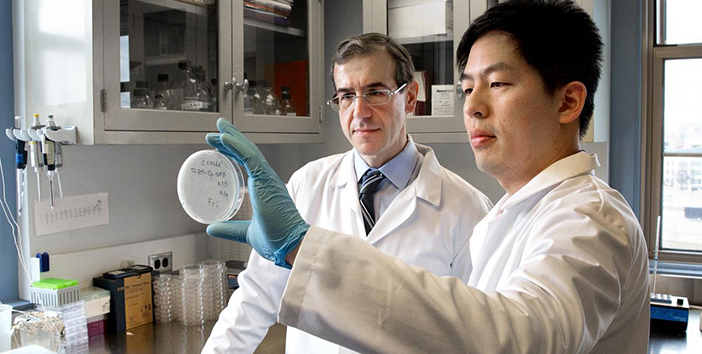Scientists identify compounds with the potential to treat MRSA and other antibiotic-resistant infections.
A team of researchers led by Brown University infectious disease experts and engineers has identified a new class of antibiotics that could one day help combat the alarming emergence of drug-resistant “superbugs.”
Eleftherios Mylonakis, MD, PhD, a professor of infectious diseases at the Warren Alpert Medical School and chief of infectious diseases at Rhode Island Hospital and The Miriam Hospital, led a multidisciplinary group searching for drugs to target bacteria that have developed a resistance to conventional antibiotics.
Their research led to the identification of two synthetic retinoids, both of which demonstrated the ability to kill MRSA (methicillin-resistant Staphylococcus aureus), a type of staph bacteria that is resistant to several antibiotics. Retinoids, which are chemically related to vitamin A, are used to treat a variety of conditions, from acne to cancer.
The work is described in the journal Nature.
“This is an emergency,” Mylonakis says. “By 2050, superbugs will surpass cancer as the global No. 1 killer. This is a frightening situation. It affects more than individuals in the hospital or the very ill or the very old. It affects everybody.”
In addition to fellow scientists at Brown, Mylonakis collaborated with researchers from Massachusetts Eye and Ear, Massachusetts General Hospital, Emory University, and Northwestern University. He says teams like his are stepping in to fill a void left by the major pharmaceutical companies, which have not invested in the development of new antibiotics for many years.
“In a simplistic way, it’s a math problem,” Mylonakis says. “It takes the bugs an average of two years to develop resistance to antibiotics. It takes more than 10 to 15 years of work to get an antibiotic into clinical practice.”
Continue reading here.




